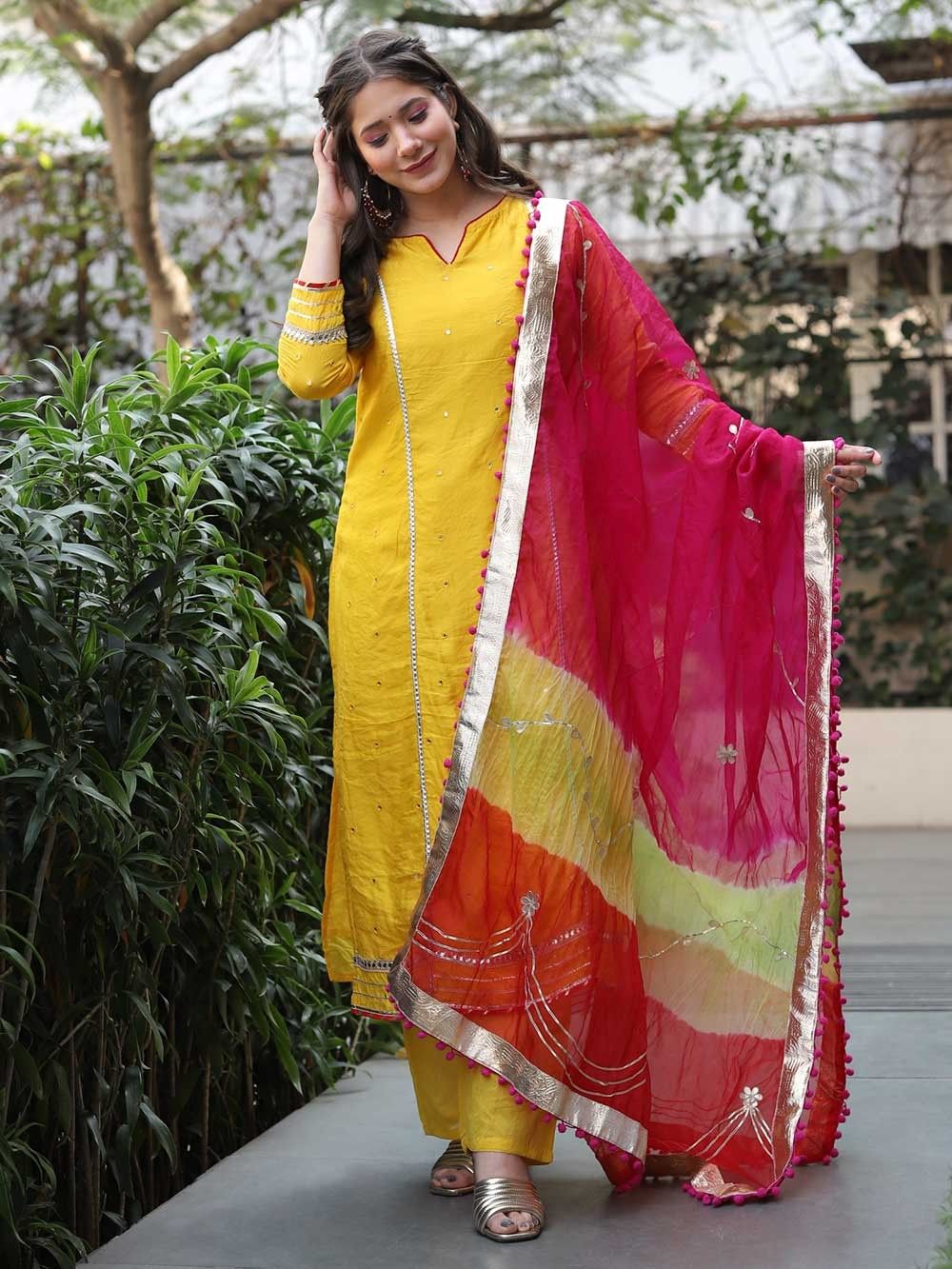A dupatta is something that Indian women have traditionally worn and is now worn by women all over the world as a symbol of humility. Every woman should own a pair of dupattas because they go with practically any outfit, including salwar kameez, salwar suits, lehengas, sarees, bridal attire, casual wear, party wear, dresses, kurta pajamas, ghagra cholis, anarkalis, and even just a pair of jeans and a t-shirt. There are many different types of dupattas, and each one can be used for a variety of occasions. They also come in a huge variety of designs, patterns, and colors. These dupattas are a true game-changer because they immediately improve the beauty, elegance, and grace of the entire ensemble. There are countless varieties of dupattas, ranging from Bandhani to Banarasi Silk.

Nevertheless, we’ll look at a few of these types today.
Chanderi Dupatta
The small Madhya Pradesh town of Chanderi is where the Chanderi fabric first appeared. The Chanderi dupattas have luxurious drapes and sheer adhere, and they are very light in weight. It exudes a sense of grandeur and is very elegant. They have intricate detailing and are very colorful dupattas. Chanderi fabrics come in three different varieties: pure silk, silk cotton, and Chanderi cotton. Florals, coin patterns, peacocks, and geometric patterns are the most popular Chanderi fabric patterns.
Banarasi Silk Dupatta
The Banarasi Silk fabric, which has its origins in Varanasi, Uttar Pradesh, is one of India’s finest traditional fabrics and is very well-liked all over the world. Real gold and silver threads were used to create the Banarasi silk dupattas and clothing that were originally made for the royal family. These are renowned for their intricate designs and zari and gold work. The majority of the intricate and challenging floral motifs are used in the designs of Banarasi silk sarees and dupattas. This was introduced to India by the Mughals, which explains why most of the designs are influenced by them.
Gota Patti Dupatta
This style of embroidery has its roots in Rajasthan and makes use of lace and ribbons dipped in gold, silver, and copper to create stunning, intricate patterns and designs. Weddings and festivals are the ideal occasions for Gota Patti dupattas. However, they can also be done on any other fabric, such as georgette, chiffon, silk, etc. Gota work is best suited for net dupattas. Although they appear heavy, the Gotas are extremely light.
Net Dupatta
One of the most remarkable examples of grace and beauty is the net dupatta. They have a sheer texture, are glittery and incredibly light in weight, and are incredibly elegant, graceful, subdued, and versatile. Net dupattas look great with chiffon suits, party outfits, wedding attire with elaborate embroidery, traditional attire like lehengas, salwar suits, or kurtas, as well as other outfits.
Chiffon Dupatta
The Chiffon dupattas are incredibly thin, delicate, and fragile in weight. Due to their cheery and airy nature, these dupattas work best in the spring and summer. They are also soft to the touch. The Georgette fabric is comparable to the chiffon fabric. Chiffon dupattas are widely available and reasonably priced. They are also better suited for lighter embroideries and are simple to drape and dye. Typically, plain chiffon dupattas are preferred over those with excessive embroidery.
Velvet Dupatta
The velvet fabric and dupattas are ideal for the winter because they feel opulent and royal. The bridal attire worn by brides at their weddings is typically made of velvet fabric. Due to their weight, velvet dupattas are challenging to carry and maintain. As a result, people frequently decide to combine their velvet dupattas with other fabrics. The velvet material is incredibly cozy and warm to the touch, feeling almost like a feather. Sarees and lehengas are the best clothing for them.
